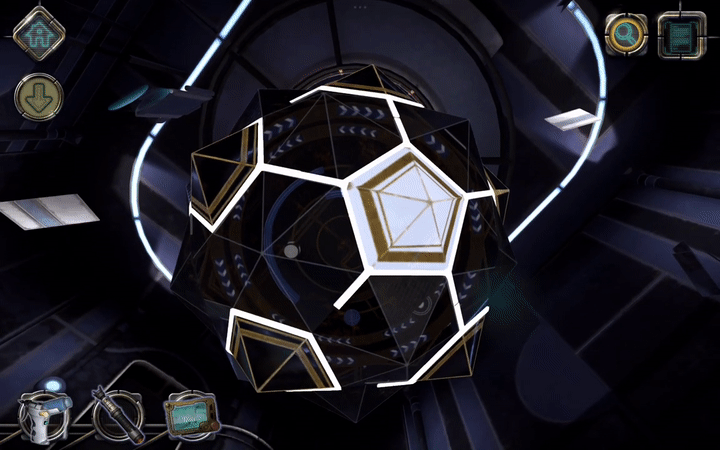PUZZLE DESIGN
My puzzle design process is similar to my level design process, and on many aspects, the two are closely intertwined. Puzzle design requires great care when it comes to introducing game mechanics and teaching them to the player gradually.
From my experience working on puzzles for both Labsterium and Littlefield Studio, I wrote a Puzzle Design Masterclass for the students of LISAA School of Art & Design.
Key principles I keep in mind when creating puzzles:
Build the game around one core mechanic: a strong puzzle game is often built around a single core mechanic, explored in varied ways (think Portal or The Witness). When designing puzzles, the first thing to do is listing every possible interaction and iteration that mechanic could have. This is also a good way to get a sense if the core mechanic is rich enough to support a whole game.
Ensure the victory conditions are unambiguous: no matter how complex the resolution, the final expected result must be clear for the player to begin crafting a solution.
Ensure puzzles are solved through reasoning: if a puzzle overwhelms the player with complexity, they may abandon reasoning and simply test random solutions. I aim to design puzzles where logical deduction is always more effective than brute force experimentation.
Take time to teach the players: introducing mechanics requires careful pacing; too slow, and the player gets bored. Too fast, and the player may not grasp the mechanic fully. If a player misunderstands or forgets a mechanic, the game becomes much harder to enjoy or master.
Surprise the players: once a player understands a mechanic, I look for ways to surprise them with new uses. A common technique I enjoy is the catch-revelation design: teach the player a solution in Level A, and make them to apply it in Level B, where this solution will fail, and then reveal an unexpected, innovative way to overcome the challenge. This makes the player stop and think about what they're actually doing rather than mindlessly following the game, and rewards them with a sense of discovery.
A puzzle I made for Machinika Atlas:

This puzzle takes place at around 65% of the game and is supposed to be the 5th chapter's toughest puzzle. This chapter's theme is gravity, so I opted for a cinematic feel by making the player fly 360° around the puzzle.
The objective is simple and intuitive: a classic pattern completion puzzle. Pentagonal objects must be rotated and all linked to each other. But because the player cannot see the whole puzzle at once, the solution becomes harder to figure out.
Players can try solutions at random, but the camera once again makes brute forcing the puzzle more tedious than actually solving it. Players can find two clues on this puzzle: there are two special pentagones, one with links in every direction, and one with no links at all. Starting from there, each adjacent pentagone's position can be deduced step by step, with no need for a complexe mental map or memory overload. The rest of the solution is easy enough, players work towards victory making visible progress and are rewarded with a cutscene upon success.
